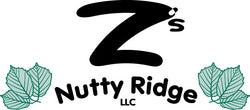What is in this newsletter?
- We have added an English walnut to our lineup of nut trees.
- You can plant potted trees all summer long!
- Have you done a web soil survey of your property?
English Walnuts - Juglans regia
We have planted over 600 English walnut trees 27 years ago looking for productive regionally adapted trees for our region. Fast forward to today and we have six trees growing relatively well and one worthy of propagation. When we started losing walnut trees fast due to lack of cold hardiness and susceptibility to bacterial leaf blight, we knew we had to broaden our search. In parallel we looked for English walnut trees growing well during our travels. In the last few years the search has broadened with the New York Chapter of the Northern Nut Growers Association headed up by Carl Albers. Carl has made many contacts and collected many samples from trees around the Northeast. We are reviewing many candidates for propagation and the future of growing English walnuts is looking much brighter.
One such exemplary tree we now have its seedlings available. What is nice is the tree is very productive, nuts are over 50% kernel, kernels are tasty and it is self-pollinating. Walnuts like soil pH of 6.5 to 7.5. We are selling potted seedlings we started late winter and are now ready for planting in their forever home.
You can see the efforts of Carl Albers at NYNGA web site as there is a link to his last presentation here. If you or you know of a healthy, cold hardy English walnut please contact Carl Albers via NYNGA’s website.
I thought we only plant trees in the spring?
Trees can be planted dormant in the fall or spring or if they are potted any time during the year. Fall is the best time to plant the trees with the least amount of maintenance. With fall planting you are giving the tree the best chance to get established without you having to water during late fall and winter months. In the spring you often need to water to get the soil to settle and get the plant established. Well potted trees are no different when planting a tree that is fully leafed out. You do need to make sure the roots are not broken when planted and that the roots have room to keep growing when planted. You also need to keep the tree well-watered during establishment. Please follow all normal plant depth and soil needs of the tree as you would any other time of the year.
What is a Web Soil Survey and what does it cost?
The USDA created a web site that tells you what you can expect for your location with a fair amount of accuracy. We have seen the plots it generates be somewhat wrong but overall it gives what you can expect for your soil before you plant or if you plan on planting more in the future. To get started go to: Web Soil Survey (usda.gov). You will see a map of the United States. Using the + or - button to zoom into you parcel of land. Once you see your land on the satellite map you need to select the ROI (Region of Interest) button to the right of the + or – zoom buttons. Draw a box on the land you want to know about. From there you can select the “Soil Map “ tab" to see what type of soil you have. From there you can learn many items about your soil. For example you can learn the soil pH at a given depth, depth to restrictions, drainage and fertility. We give good detail in our book but the above will get you started.
